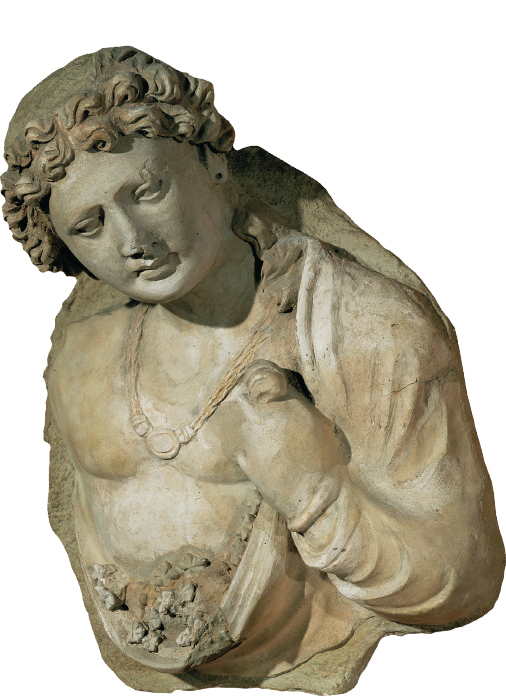Understanding World Societies:
Printed Page 78
> What was the result of Indian contact with the Persians and Greeks, and what were the consequences of unification under the Mauryan Empire?

Hellenistic Influences in Gandharan Art
Because Alexander the Great’s army had reached Gandhara and Hellenistic states and subsequently controlled it for more than a century, the art of this region was strongly influenced by Greek artistic styles. This stucco figure was excavated from a site in eastern Afghanistan where some twenty-three thousand Greco-Buddhist sculptures were found. Hellenistic influence, as evidenced by the drape of the clothing and the modeling of the head, is particularly easy to recognize in this piece. (Erich Lessing/Art Resource, NY)
Because Alexander the Great’s army had reached Gandhara and Hellenistic states and subsequently controlled it for more than a century, the art of this region was strongly influenced by Greek artistic styles. This stucco figure was excavated from a site in eastern Afghanistan where some twenty-
IIn the late sixth century B.C.E., with the creation of the Persian Empire that stretched from the west coast of Anatolia to the Indus River (see “The Rise and Expansion of the Persian Empire” in Chapter 2), west India was swept up in events that were changing the face of the ancient Near East. A couple of centuries later, by 322 B.C.E., the Greeks had supplanted the Persians in northwest India. Chandragupta saw this as an opportunity to expand his territories, and he successfully unified all of north India. The Mauryan (MAWR-